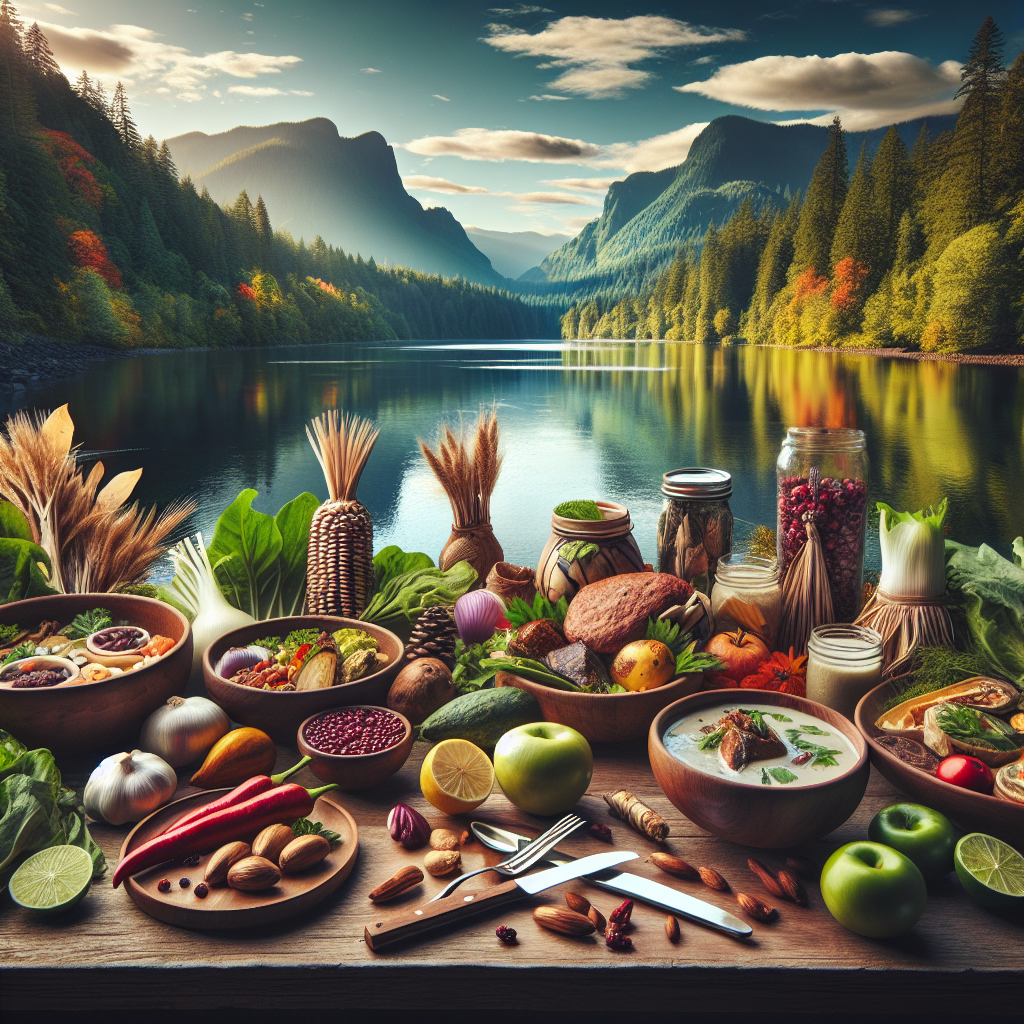An Edible Journey through Oregon’s Indigenous History
When you think about Oregon, the mind conjures up images of misty mountains, dense forests, wide rivers cutting through gorges, and the relentless Pacific Ocean licking at its rugged coastline. A place where the rain sometimes seems ceaseless. But beyond these scenic hallmarks and weather quirks, the Beaver State offers something more profound that cannot be savored at first glance – a rich tapestry of indigenous food traditions.
Delving into the Local Foodways
Oregon is a land steeped in indigenous lore, the tale of multiple tribes like the Chinook, Kalapuya, and Umatilla who for millennia have thrived on its bounty. The native foodways, crucial to the region’s cultural identity, are as diverse and intricate as the Willamette Valley’s rolling hills.
Near the towering Mount Hood, that often has its peak hiding coyly behind the clouds, the Warm Springs tribes have harvested huckleberries for centuries. These tart, indigo nuggets are aplenty in late summer, dotting the alpine landscapes. During these yearly harvests, traditional recipes of huckleberry pudding and huckleberry slump (a kind of cobbler) get a run in local kitchens, a treasured treat that spells comfort.

Over in Eastern Oregon, where the Painted Hills bask under the golden sun, the Nez Perce and Umatilla tribes have long depended on what the locals call ‘prairie’s breadbasket’. Here, under the azure blue sky stretching limitlessly, camas roots are harvested. These were traditionally pit-roasted, transforming into a sweet, starchy foodstuff, essential to the indigenous folks of this arid landscape.
A Celebration of Bounty: Salmon and More
No discussion of Oregon’s indigenous food heritage would be complete without acknowledging the mighty salmon, the backbone of many tribes. The Columbia River, which slashes through the Cascade Range like an artist’s bold stroke, brims with this stunning fish variety. The Confederated Tribes of Grand Ronde along these riverbanks have stories, centuries-old, of salmon cooked on cedar planks over open flame. The uniquely smoky flavor this method imparts is stuff legends are made of.
Then there are the mollusks and crustaceans that fringe Oregon’s wild, wind-swept coastline. The Tillamook and Coos tribes skillfully harvested clams, mussels, and Dungeness crabs, tracing a culinary culture that still lingers today. When visiting Cannon Beach, you may get a whiff of freshly smoked clams reminiscent of this ancient tradition.
To complement this deliciously diverse maritime harvest, there’s the acorn glut from Oregon white oaks, often ground into flour and used in soup and bread, thus earning the affectionate moniker ‘tree wheat’.
Reviving Indigenous Traditions through Culinary Culture
An exciting trend that’s gaining steam these days in Oregon is the renaissance of indigenous food culture. Alarmed by the erosion of these traditional foodways, and understanding their importance in sustainable living, many locals are promoting these age-old cultivation, harvest, and cooking methods.
Take, for instance, the Native Bowl, a food truck in bustling Portland, which serves up indigenous-inspired dishes with a contemporary spin. Or, in the university town of Eugene, there’s the yearly camas bake event, a community celebration that showcases the traditional cooking method of these bulbous root crops.
A Delectable Invitation
Amongst the lush Douglas firs and the specter of the craggy Three Sisters mountains, Oregon’s indigenous food culture is a testament to the land’s abundance. It’s a world beyond craft beers, classic Oregano folk, and the heady aroma of Portland’s coffee shops. It’s a world where the circle of life extends from the forest, river, and ocean to the table.
A world that waits for the more curious among us to explore. So, the next time you find yourself meandering along the Deschutes River, marveling at its unperturbed beauty, remember, there’s a delightful culinary heritage just waiting to be savored. Dive in, and let your senses guide you through this wonderfully edible history.
